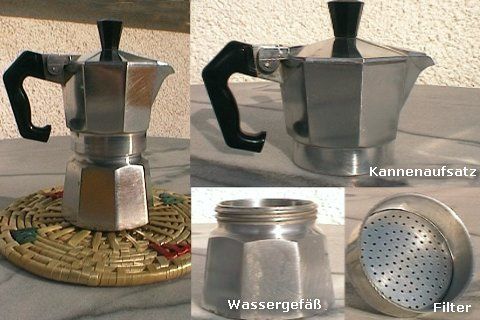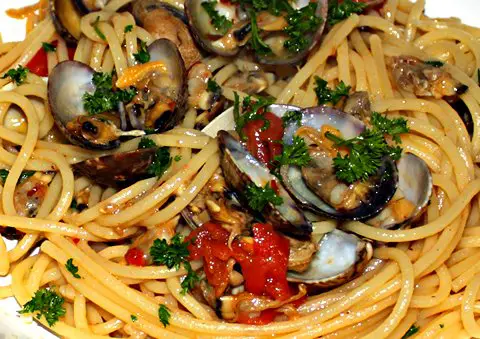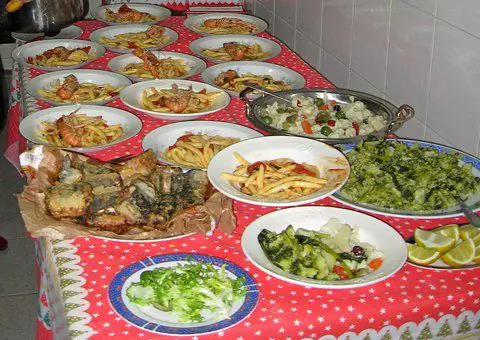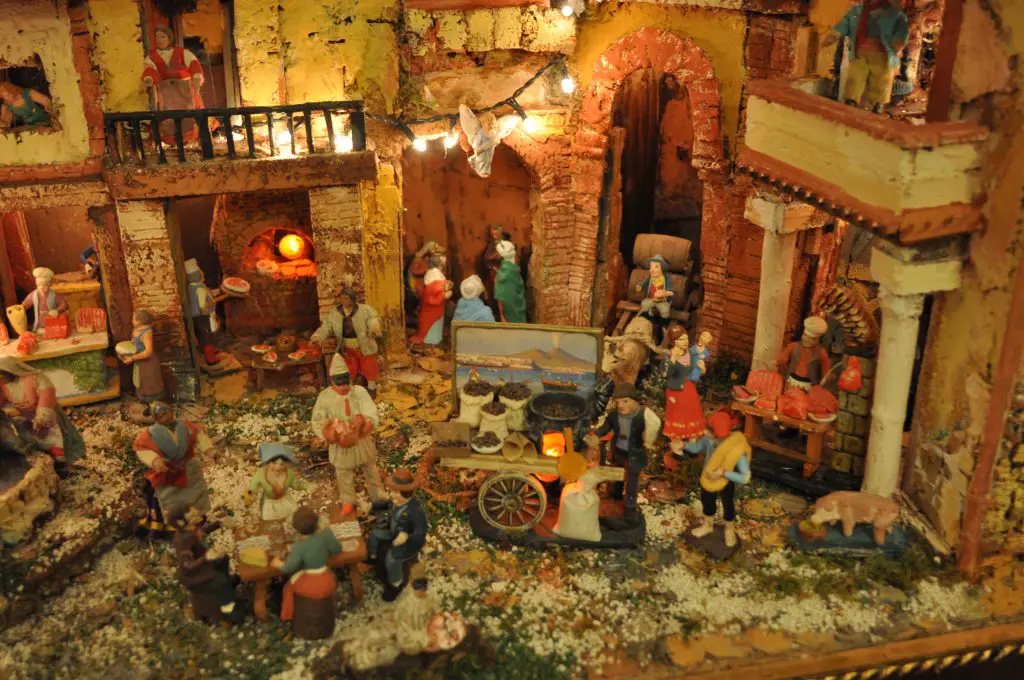“O’ caffè” represents more for the Neapolitans than just an aromatic and stimulating beverage. It symbolizes Naples like the Vesuvius or the pizza, and it is the symbol of friendship and sociability. People like to offer it to guests, have it during “a little break”, in a bar, or after dinner with the family.
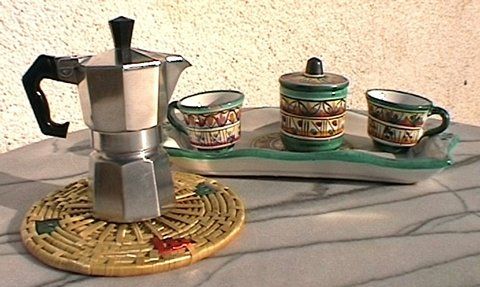
Traditional aluminiumk coffee maker and cups of Sorrento (© Portanapoli.com)
A Neapolitan is generally very critical when it comes to judging a coffee. It is said that Naples has the best Italian coffee even though “de gustibus non disputandum est” or “There’s no arguing taste”. It is undisputed, however, that all Italian advertising spots for coffee are set in a Neapolitan ambiance – and there’s certainly a reason for that!
When Neapolitans say caffè, they always mean “a tazzulella ‘e cafe”, a coffee in an espresso cup. But this caffè isn’t always an espresso, because…
There a three ways of preparing a perfect caffè!
1) Espresso (mainly in bars and restaurants)
The “caffè espresso” is prepared with an espresso machine as result of an high-pressure brewing process: the coffee is brewed by forcing very hot, but not boiling water.
A professional espresso machine is very expensive and you will find it only in bars. Anyway, in the last time there are always more “home espresso machines” on the market, but the results are significantly inferior than an espresso made with a professional machines.
2) Moka (at home with moka pot)
All Italians have at home the traditional aluminum coffee maker (moka pot), to prepare a perfect coffee. which consists of three parts: the water container, the filter and the top piece of the pot. Heating produces steam and, by using pressure, the water is being pressed through the filter into the top piece of the pot.
In Italy, normally you use the word “caffè” for the coffee brewed at home with moka machine, and you say “espresso” when you want to mean the coffee you get in a bar.
But Italian people use mostly the word “caffè” whether at home or at bar/restaurant. Thus, when they say “caffè”, if they are at home they mean a moka coffee, if they are in a bar they mean the traditional espresso. Moreover in a bar you can get at least a dozen of different kind of caffè like caffè (the traditional espresso), caffè corretto, caffè freddo, caffè macchiato, caffè con panna, caffè ristretto, caffè lungo, latte macchiato, cappuccino, caffè decaffeinato (and in Napoli some more caffè typical of famous Neapolitan and Southern Italian bars).
And if that’s not confusing enough, there is a third, ancient, tradition of preparing caffè: Macchinetta napoletana, the Neapolitan flip coffee pot
3) Neapolitan coffee “Alla napoletana”
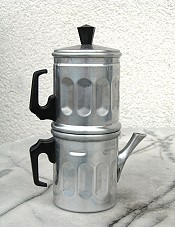
Macchinetta napoletana,
the Neapolitan flip coffee pot
The caffè is brewed with a macchinetta napoletana (the Neapolitan flip coffee pot), which you find exclusively in Naples.
Today, it isn’t used that often any more because it needs more time and experience – and, unfortunately, time has become a rare resource in Naples too. The traditional “macchinetta napoletana” has been replaced for the most part by the moka pot.
How to recognize a perfect Neapolitan coffee
The taste of the Neapolitan (and Italian) coffee depends on the way of preparation, water quality, and brand, of course. The look and the smell of a caffè reveal its quality. A good caffè has a nut-brown colour, a creamy consistency, and a very aromatic smell. When you stir in the sugar, which tends to sink slowly to the bottom of the cup, you get a cream. The temperature of the caffè is important, as only hot caffè can bind the flavouring substances. A bad caffè on the other hand has a light colour, makes bubbles and has a bitter taste.
More about Italian coffee:
How to prepare a perfect Italian coffee with a moka pot


